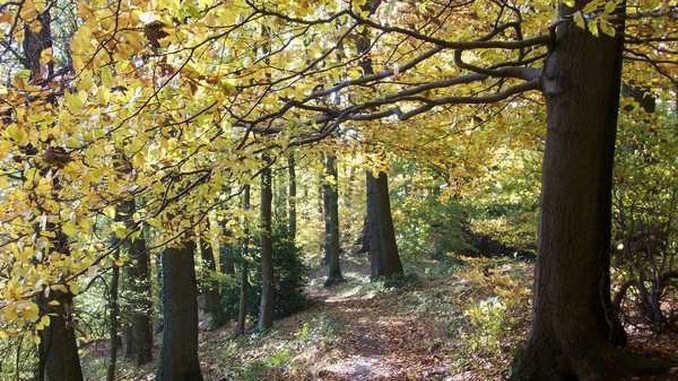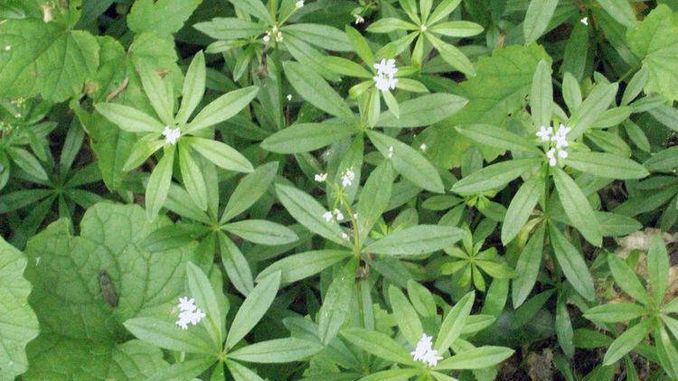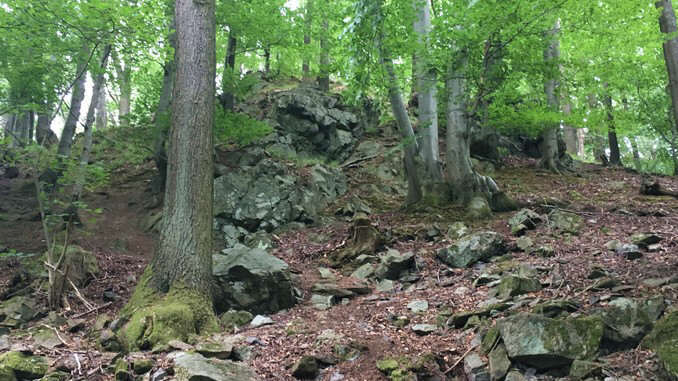
If the Siebengebirge was untouched nature, most likely the beeches would be predominant in the woods. This post shows some native trees from our region.
Where what kind of tree grows best depends on several factors. Is it an upland or lowland area, is it warm or cool there, is the soil rather moist or dry, and what is its nature? In the Siebengebirge, trees encounter different conditions at different places; therefore we have a variety of forest communities here, above all beech forests. Beeches are “our” trees.
On acidic soils, such as the trachyte or trachyte tuff soils at the mountains Petersberg and Ölberg, woodrush-beech forests grow. Here we have mostly beeches, then oaks and in higher altitudes sycamores.

Then there is the woodruff-beech forest type, it needs alkaline soil which can be found in latite and basalt mountains. Here, too, we have mainly beeches, and next to them sycamores, ashes, English oaks and sessile oaks.
Besides the name giving woodruff, many other plants thrive here, among them are many early bloomers, so the first months of spring are especially beautiful in these forests.

The microclimate also plays a role. In particularly warm locations even orchids can thrive, then we speak of orchid-beech forests. Ferns grow abundantly in damp, cooler locations. The forest barley-beech forest type thrives on particularly nutrient-rich basalt soils.
Hornbeam forests
In locations with damp soil, the stitchwort-oak-hornbeam forest type thrives. Here we have mainly English oaks and hornbeams, but field maples or hazels can also be found. Besides the name giving stitchwort, many other flowers thrive here, among them the wood anemones in spring.
Rather dry and warm locations are not suitable for the European beech, here we have cleaver-oak-hornbeam forests, named after the tree species sessile oak, English oak and hornbeam as well as the cleaver.

There is such a forest at Mount Drachenfels, where primroses and sometimes purple gromwells bloom. On the Drachenfels’ west side, the soil is too dry even for this forest community, here we have sessile oaks and bellflowers.
Talus forest type
Then there are forests where the ground is covered with stone blocks or gravel, and in the Siebengebirge, many mountains have been quarried for decades. Here we find sycamores, ashes and also lime trees, if it is warm enough.

Coniferous trees
Then we have the conifers, among them larches, spruces, pines, Douglas firs and firs. I love the many different shades of green in the mixed forests.

Ripuarian trees
Today, most areas along the Rhine are cultivated by man, that means settlements designed by humans with promenades, shoreline parks, fields, and meadows and more. Only a few remnants of the original riverside woodlands have remained, so on the Rhine island of Nonnenwerth or at the mouth of the rivers Ahr and the Sieg into the Rhine. Close to the water grow alders, ashes, and willows.

At the Siebengebirge streams we have mainly black alders, ashes and crack-willows. In the Siefen, there are sessile cherries, alders and ashes.

Be the first to comment